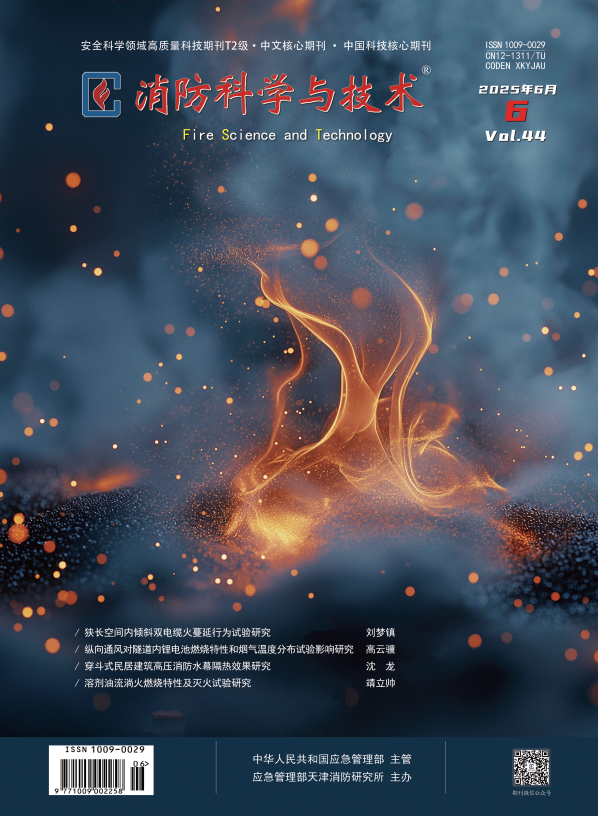|
|
Research progress on thermal management technology of lithium-ion batteries based on PCM
Gao Yunji, Lei Zijian, Sun Ao, Zhang Yuchun
2025, 44 (6):
764-770.
In order to study the effect of longitudinal ventilation on the combustion characteristics and smoke temperature distribution of lithium batteries in tunnels, a series of thermal runaway tests of single, four and nine 18650-type lithium battery packs with longitudinal ventilation wind speed of 0~1.5 m/s were carried out in the tunnel space to analyze the regularities of the experiment phenomenon, meanwhile, single, four, and nine 18650-type lithium battery packs experiments in a windless environment were carried out in the open spaces, and the change rules of thermal runaway phenomenon, characteristic flame length, mass loss, thermal runaway temperature, and tunnel smoke temperature distribution were analyzed. The results show that: The maximum characteristic flame length and maximum jet flame temperature of the lithium battery thermal runaway increase with the increase of wind speed; the maximum characteristic flame length and maximum jet flame temperature of the lithium battery thermal runaway in the confined space are smaller than those in the open space. The temperature of the smoke near the fire source has a significant peak, and the temperature of the smoke at the distance from the fire source fluctuates less.With the increase of the longitudinal ventilation wind speed, the temperature of the downstream smoke is higher than that of the upstream at the distance from the fire source. The longitudinal temperature distribution of the lithium battery smoke is in line with the exponential decay, and the experimental data are in good agreement with the predicted data, the critical wind speed of single, four, and nine lithium battery packs were 0.93 m/s, 1.83 m/s, and 2.05 m/s.
Related Articles |
Metrics
|



